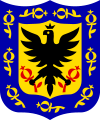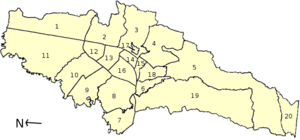Bogotá
| Bogotá | |||
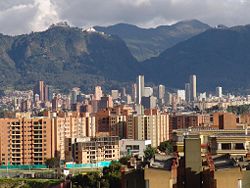 |
|||
|
|||
| Motto: Bogotá, 2600 metros más cerca de las estrellas Bogotá, 2600 meters closer to the stars |
|||
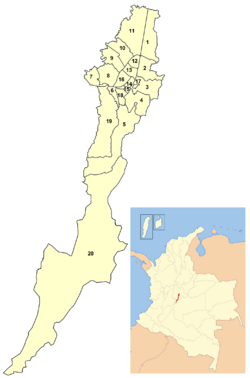 |
|||
| Coordinates: | |||
| Country | Colombia | ||
|---|---|---|---|
| Department | Bogotá, D.C.* | ||
| Foundation | August 6, 1538 | ||
| Government | |||
| - Mayor | Samuel Moreno Rojas, PDA | ||
| Area | |||
| - City | 1,587 km² (612.7 sq mi) | ||
| - Land | 1,731.9 km² (668.7 sq mi) | ||
| Elevation | 2,640 m (8,661 ft) | ||
| Population (2008 census estimate) [2] | |||
| - City | 8,550,000Ranked 1 | ||
| - Density | 3,914/km² (10,137.1/sq mi) | ||
| - Metro | 10,244,480 | ||
| HDI (2006) | 0.830 – high | ||
| *Bogotá is physically within and is the capital of Cundinamarca Department, but as the Capital District is treated as its own department. | |||
| Website: City Official Site Mayor Official Site Bogotá Tourism |
|||
Bogotá — officially named Bogotá, D.C. (D.C. for "Distrito Capital", which means "Capital District"), formerly called Santa Fe de Bogotá — is the capital city of Colombia, as well as the most populous city in the country, with 7,033,914 inhabitants (2007). Bogotá and its metropolitan area, which includes municipalities such as Chía, Cota, Soacha, Cajicá and La Calera, had an estimated population of 8,244,980.[1] In terms of land area, Bogotá is also the largest in Colombia, and its altitude (2,640m) makes it the third-highest major city in the world, after La Paz and Quito. With its many universities and libraries, Bogotá has become known as "The Athens of South America"[2].
Contents |
History
Bogotá was originally called "Bacatá" (which means “planted fields”) by the Muiscas.[3] It was the center of their civilization before the Spanish explorers colonized the area, and it sustained a large population. The European settlement was founded in August 6, 1538 by Gonzalo Jiménez de Quesada and was named "Santa Fé de Bacatá" after his birthplace Santa Fé and the local name. "Bacatá" had become the modern "Bogotá" by the time it was made the capital of the New Kingdom of Granada, which was then part of the Viceroyalty of Peru, and later of the Viceroyalty of New Granada. The city soon became one of the centers of Spanish colonial power and civilization in South America.
In 1810-11 its citizens revolted against Spanish rule and set up a government of their own, but had to contend with internal divisions and the temporary return to power of Spanish military loyalists who regained control of the city in 1816. In 1819 Simón Bolívar recaptured it after his victory at Boyacá. Bogotá was then made the capital of Gran Colombia, a federation combining the territories of modern Panama, Colombia, Venezuela, and Ecuador. When Gran Colombia was broken up, Bogotá remained the capital of New Granada, which later became the Republic of Colombia. See History of Colombia.
In 1956 the municipality was joined to other neighboring municipalities forming a "Special District" (Spanish: Distrito Especial). The Constitution of 1991 confirmed Bogotá as the Capital of Colombia, gave it the name "Santa Fe de Bogotá", and changed the category from Special District to "Capital District" (Distrito Capital).
In August 2000 the name was officially changed back to simply "Bogotá".
Flag

The flag originates from the insurgency movement against the colonial authorities which began on July 20, 1810, during which the rebels wore armbands with yellow and red bands, as these colours were those of the Spanish flag used as the flag for the New Kingdom of Granada.
In October 9, 1952, exactly 142 years after these events, decree 555 of 1952 officially adopted the patriotic armband as the flag of Bogotá. The flag of Cundinamarca follows the same pattern, plus a light blue tile which represents the Virgin Mary's cape.
The flag itself is a yellow band above a red one. The yellow denotes the gold from the earth, as well as the virtues of justice, clemency, benevolence, the so-called "mundane qualities" (defined as nobility, excellence, richness, generosity, splendour, health, steadfastness, joy and prosperity), long life, eternity, power and constancy. The red denotes the virtue of charity, as well as the qualities of bravery, nobility, values, audacity, victory, honour and furor, Colombians call it the blood of their people.
Coat of arms

The coat of arms of the city was granted by emperor Charles V (Charles I of Spain) to the New Kingdom of Granada, by royal decree given in Valladolid, Spain on December 3, 1548. It contains a black eagle in the center, which symbolises steadfastness. The eagle is also a symbol of the Habsburgs, which was the ruling family of the Spanish empire at the time. The eagle is crowned with gold and holds a red pomegranate inside a golden background. The border contains olive branches with nine golden pomegranates in a blue background. The two red pomegranates symbolize audacity, and the nine golden ones represent the nine states which constituted the New Kingdom of Granada at the time.
In 1932 the coat of arms was officially recognized and adopted as the symbol of Bogotá.
Anthem
The lyrics to the anthem of Bogotá were written by Pedro Medina Avendaño, the melody was composed by Roberto Pineda Duque. The song was officially declared the anthem by decree 1000 of July 31, 1974, by then Mayor of Bogotá, Aníbal Fernandez de Soto.
Geography
Location

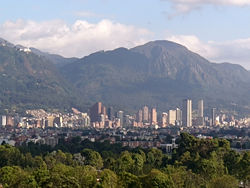
Bogotá is located near the geographic center of Colombia, on the east of the Savannah of Bogotá (Sabana de Bogotá), 2640 meters (8661 ft) above sea level. Although it is located in what is popularly called the "sabana", literally meaning "savannah", the geographical site is actually a high plateau in the Andes mountains. The extended region is also known as "Altiplano Cundiboyacense" which literally means "high plateau of Cundinamarca and Boyacá".
The Bogotá River crosses the 'sabana' forming Tequendama Falls (Salto de Tequendama) to the south. Tributary rivers form valleys with flourishing villages, whose economy is based on agriculture, livestock raising and artisanal production.
The 'sabana' is bordered to the east by the Eastern Cordillera of the Andes mountain range. Surrounding hills, which limit city growth, run from south to north, parallel to the Guadalupe and Monserrate mountains. The western city limit is the Bogotá River. The Sumapaz paramo (moorland) borders the south and to the north Bogotá extends over the mentioned plateau up to the towns of Chía and Sopó.
Climate

The average temperature on the 'sabana' is 14.0°C, varying from -8°C to 28ºC. Dry and rainy seasons alternate throughout the year. The driest months are December, January, February and March; the rainiest are April, May, September, October and November. June and July are usually rainy periods and August is sunny with high winds. Hailstorms are common during the rainy season, and can be very strong, especially in October.
Frost usually occurs in dry season. During this period, the temperature falls below −4°C (24°F) at night and ascend to 25°C (77°F) in the day. The lowest temperature ever recorded was −8°C (17°F) inside the city and −10°C (14°F) in the nearby towns of the savanna. The highest temperature ever recorded was 28°C (82°F).
Climatic conditions are irregular and quite variable due to the El Niño and La Niña climatic phenomena, which occur in and around the Pacific basin and are responsible for very pronounced climatic changes.
| Month | Jan | Feb | Mar | Apr | May | Jun | Jul | Aug | Sep | Oct | Nov | Dec | |
|---|---|---|---|---|---|---|---|---|---|---|---|---|---|
| Average high °C (°F) | 16.4 (62) |
16.7 (62) |
16.7 (62) |
16.0 (61) |
16.2 (61) |
15.7 (60) |
14.9 (59) |
15.4 (60) |
15.8 (60) |
15.9 (61) |
16.0 (61) |
16.1 (61) |
|
| Average low °C (°F) | 5.6 (42) |
6.5 (44) |
7.6 (46) |
8.6 (47) |
8.7 (48) |
8.3 (47) |
7.7 (46) |
7.3 (45) |
7.1 (45) |
7.7 (46) |
7.9 (46) |
6.3 (43) |
|
| Precipitation mm (inches) | 29 (1.14) |
44 (1.73) |
66 (2.6) |
101 (3.98) |
93 (3.66) |
54 (2.13) |
43 (1.69) |
46 (1.81) |
72 (2.83) |
107 (4.21) |
91 (3.58) |
53 (2.09) |
|
| Source: World Weather Information Service | |||||||||||||
Urban layout and nomenclature
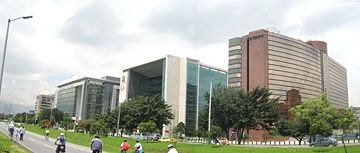
Bogotá has over one thousand localities, forming an extensive network of neighborhoods. Areas of higher economic status tend to be located to the north and north-east, close to the foothills of the Eastern Cordillera. Poorer neighborhoods are located to the south and south-east, many of them squatter areas. The middle classes usually inhabit the central, western and north-western sections of the city.
The urban layout in the center of the city is based on the focal point of a square or plaza, typical of Spanish-founded settlements, but the layout gradually becomes more modern in outlying neighborhoods. The current types of roads are classified as calles (streets), which run perpendicular to the Cordillera, with street numbers increasing towards the north, and also towards the south (with the suffix "Sur") from Calle 1. Carreras run parallel to the hills, with numbering increasing as one travels east or west of Carrera 1 (with the suffix "Este" for roads east of Carrera 1). Other types of roads more common in newer parts of the city may be termed "Eje" (Axis), "Diagonal" or "Transversal".
The numbering system for street addresses recently changed, and numbers are assigned according to street rank from main avenues to smaller avenues and local streets. Some of Bogota's main roads, which also go by a proper name in addition to a number, are:

- Norte-Quito-Sur or N.Q.S.(North Quito South Avenue, from 9th road at north following railway to 30th road Avenue, or Quito City Avenue, and Southern Highway)
- Autopista Norte-Avenida Caracas (Northern Highway, or 45th road, joined to Caracas Avenue, or 14th road)
- Avenida Circunvalar (from downtown following hillside on eastern hills going to La Calera)
- Avenida Suba (60th transversal from 100th street to the Suba Hills; 145th street from Suba Hills westward)
- Avenida El Dorado (El Dorado Avenue, or 26th street)
- Avenida de las Américas (Americas Avenue, from 34th street at east to 6th street at west)
- Avenida Primera de Mayo (May First Avenue, or 22th south street)
- Avenida Ciudad de Cali (Cali City Avenue, or 86th road)
- Avenida Boyacá (Boyacá Avenue, or 72th road)
- Autopista Sur (Southern Highway)
Divisions
|
|
|||||
|---|---|---|---|---|---|
|
|||||
Demographics
The largest and most populous city in Colombia, Bogotá has 7,881,156 inhabitants in its metropolitan area (2005 census).
Similar to the demographics of Colombia as a whole, the composition of the city's population is of mestizo origin (those of mixed Amerindian and white European descent), in addition to a population of white European descent, mostly of Spaniard ancestry (and to a lesser degree of Italian, French, German, and other European stock). The population of Afro-Colombians in Bogotá is smaller than cities along the coast such as Cartagena, where Afro-Colombians have historically resided.
Crime
Bogotá has gone to great lengths to change its crime rate and its image with increasing success after being considered in the mid-90s one of the most violent cities in the world.[4] In 1993 alone it had 4,352 intentional homicides and a rate of 79 per 100,000 people.[5] The success was the result of a participatory and integrated security policy, "Communidad Segura", that was first adopted in 1995 and continues to be enforced. In 2007, Bogotá had a murder rate of 20 persons per 100,000 inhabitants with 1,401 fatalities.[6] It should be stated that these figures, both in terms of frequecy and rate, remain far lower than certain US cities such as Detroit, St. Louis, and Washington, DC.[7] Today, Bogotá has a lower murder rate than Caracas and Rio de Janeiro.
The situation in Bogotá seems to be "greatly improved in terms of security and public safety from five years ago, and the atmosphere is much more relaxed", said Marshall Louis, a spokesman for the United States Embassy.[8][9]
Government

Bogotá is the capital of the Republic of Colombia, and houses the national legislature, the Supreme Court of Justice, and the center of the executive administration as well as the residence of the President of the Republic. The Principal Mayor and District Council – both elected by popular vote – are responsible for city administration. In 2007 Samuel Moreno Rojas was elected Mayor for the period 2008-2011.
The city divided into 20 localities: Usaquén, Chapinero, Santa Fe, San Cristóbal, Usme, Tunjuelito, Bosa, Kennedy, Fontibón, Engativá, Suba, Barrios Unidos, Teusaquillo, Los Mártires, Antonio Nariño, Puente Aranda, La Candelaria, Rafael Uribe Uribe, Ciudad Bolívar, Sumapaz.
Each of the 20 localities are governed by an administrative board elected by popular vote, made up of no less than seven members. The Principal Mayor designates local mayors from candidates nominated by the respective administrative board.
Economy
Bogotá is Colombia's largest economic center (followed by Medellín, Cali and Barranquilla), and one of the most important in Latin America. Its GDP of US$86 billion, almost a quarter of Colombia's total, is the fifth highest among cities in South America. Most companies in Colombia have their headquarters in Bogotá (for example, Bavaria, Avianca), it is the site of Colombia's main stock exchange, and it is home to many foreign companies doing business in the greater South American continent. Bogotá is also a major center for the import and export of goods for Colombia and the Andean Community in Latin America. In downtown Bogotá, millions of dollars in domestically produced rough and cut emeralds are bought and sold daily.
Bogotá is the centre of Colombian business, and the city's industrial base include staples of the Colombian economy such as GM Colmotores, Compañía Colombiana Automotriz, and Ecopetrol. Other important industries include financial services, especially banking. Bogotá is the headquarters of major commercial banks, and of the Banco de la República, Colombia's central bank. Bogotá is a centre of printing and publishing, as well as of the national telecommunications network and has the biggest industrial facilities in the country. Bogotá also houses the central governmental institutions and military headquarters, which represent another major component of the city's economy.
The city is also a major convention destination with major convention centres including Centro Ferial de Convenciones Corferias, Centro de Convenciones y Eventos Cafam, Centro de Convenciones Gonzalo Jiménez de Quesada, among others.
Utilities
Energy and sewer bills are stratified based on the location of owner's residence, with the intended purpose that wealthier sections of society subsidize the energy bills of the poorer sections of society. Telephone service is provided by both "Empresa de 07) three main operators of wireless phones: Movistar (owned by Spanish firm Telefónica), Comcel (owned by Telmex) and Tigo (co-owned by ETB, EPM and Millicom).
Transportation
Bogotá's growth has placed a strain on its roads and highways, but within the past decade significant efforts to upgrade the infrastructure have been undertaken. The TransMilenio rapid transit system, created during Enrique Peñalosa's mayoral term, is a form of bus-rapid transit that has been quickly and affordably deployed as an appropriate stopgap measure to compensate for the lack of a metro system. Despite the city's chronic congestion, many of the ideas enacted during the Peñalosa years are regarded worldwide to be cost-effective, efficient and unique solutions. In addition to TransMilenio, the Peñalosa administration and voter-approved referenda helped to establish travel restrictions on private cars during peak hours, "Car Free Days" on Sundays, a massive system of bicycle paths and segregated lanes called 'ciclorrutas', and the removal of thousands of parking spots in an attempt to make roads more pedestrian-friendly.
Private car ownership, despite being under 25%, forms a major part of the congestion, in addition to taxis, buses and commercial vehicles. However, due to the ciclorruta system, bicycles have become an increasingly important form of transportation as well.
Buses remain the main means of mass transit. There are two bus systems: the traditional system and Trasmilenio. The traditional system runs a variety of bus types, operated by several companies on normal streets and avenues:
- Bus; large buses.
- Buseta; medium size buses.
- Colectivo; vans or minivans.
The bigger buses were, until May 2008, divided into two categories: "Ejecutivo", which is supposed to be a deluxe service and is not supposed to carry standing passengers, and "corriente" or normal service. Bus fares range, as of March 2008, from $1100 to $1250 (US$ 0.60-0.70 approx.). Since May 2008, all buses run as "corriente" services.
Airports
Bogotá's principal airport is El Dorado International Airport, west of the city's downtown, at the end of Av. El Dorado. Due to its central location in Colombia and in Latin America, it is a natural hub for domestic and international airlines.
El Dorado is heavily congested, as it handles more passengers than its optimal capacity. Work on a major expansion of El Dorado airport started in September 2007. When completed, this will expand capacity from the current 8 million passengers a year to 16 million.
A secondary airport, Catam, serves as a base for Military and Police Aviation, also Guaymaral Airport, for private aviation activities.
Bus terminals
Bogotá is a hub for domestic and international bus routes. The Bogotá terminal serves routes to most cities and towns in Colombia [10] and is the largest in the country. There is international service to Ecuador and Venezuela.
TransMilenio

TransMilenio is a bus rapid transit network combining modern articulated buses that operate on dedicated bus roads (busways) and smaller buses (feeders) that operate in residential areas, bringing passengers to the main grid. TransMilenio's main routes are: Caracas Avenue, Northern Highway (Autopista Norte), 80th Street, Americas Avenue, Jiménez Avenue, and 30th Avenue (also referred to as Norte Quito Sur or N.Q.S. for short). Routes for Suba Avenue and Southern Highway (Autopista Sur), the southern leg of the 30th Avenue, were opened in April 2006. The third phase of the system will cover 7th Avenue, 10th Avenue, and 26th Street (or Avenida El Dorado). The system is planned to cover the entire city by 2030.
Although the Transmilenio carries commuters to numerous corners of the city, it more expensive than any public transport except taxis, and fares increase with petroleum fuel prices. As of December 2007 the price of a ticket was $1400; however, a single ticket allows unlimited transfers until the passenger leaves the system, and passengers travel on feeder routes for free. Transmilenio does not yet cover some main routes, and buses are overcrowded.
Transmilenio has an interactive guide www.surumbo.com to offer the most efficient ways to use the buses, with maps and information on routes, stations and nearby places.
Bike paths network
Bogotá's network of bike paths, called ciclorrutas, is one of the most extensive dedicated bike path networks of any city in the world, with a total extension of 303 km. It extends from the north of the city, 170th Street, to the south, 27th Street, and from Monserrate on the east to the Bogotá River on the west. The ciclorruta was started by the 1995–1998 Antanas Mockus administration, and considerably extended during the administration of Mayor Enrique Peñalosa. Since the construction of the ciclorrutas bicycle use in the city has increased 5-fold: it is estimated that 300,000 - 400,000 bicycle trips are made every day, largely in southern, poorer, areas.
Tourist train
On weekends a sightseeing train, popular with Bogotá residents, runs to outlying towns Zipaquirá, Cajicá and Nemocón along the lines of the former Ferrocarril de la Sabana. The route to Zipaquirá (famous for its salt cathedral) is 53 km long. Another line goes towards the north for 47 km and ends at Briceño. Trains are operated by Turistrén S.A..
Colleges and universities

Known as the Athens of South America,[11] Bogotá has more schools, colleges, and universities than any other city in Colombia and a scholarly tradition that dates back to July 13 1580, when the first university, Saint Thomas Aquinas University, was founded by the Dominicans. On July 9, 1623 the Pontifical Xavierian University was founded by the Jesuits and on December 31, 1651 the Our Lady of the Rosary University by Cristóbal de Torres.
The largest university in Colombia, the Universidad Nacional de Colombia, was founded on September 22, 1867. A study by Universia found it to be the Colombian university producing the largest number of scientific papers published in peer-refereed publications in 2005, and the 142nd most prolific in Latin America.[12]
Other notable universities include the Universidad Externado de Colombia, founded in 1886, and the University of the Andes, founded in 1948.
Parks and recreation
There are many parks, many with facilities for concerts, plays, movies, storytellers and other activities.
- "Simón Bolívar Metropolitan Park" is a large park regularly used to stage free concerts (such as the annual Rock al Parque, a festival in which new and popular Latin rock bands play free of charge). Kites are flown in the park.
- The public Parque Nacional (National Park)has many trees and green spaces, ponds, games for children, many foot and bicycle paths, and venues for entertainment such as public screenings of movies and concerts and events organized by the Council of Bogotá. It is located between two main streets, the Circunvalar Avenue and the 7th Avenue.
- The Bogotá Botanical Garden (Jardín Botánico de Bogotá).
- "Parque de la 93" is located between 93rd and 93Ath street, and 12th and 13th avenue, and has day-time leisure activities and nightlife. Several of the top restaurants and bars in the city are in this park.
- There are restaurants and bars in the vicinity of a T-shaped pedestrian strip dubbed "La T" (The T) at the corner of 82nd street and Cra.12. More recently, restaurant activity has begun in the "Zona G" (Gourmet Zone) in and around 67th and 70th Streets and other locations including Usaquen in the north-east and La Macarena (downtown).
- Mundo Aventura is an amusement park, with an entry charge and charges for the different attractions. It has rides for adults and children, a petting zoo, and the "cerdodromo", where pigs race.
- "Salitre Mágico" is another amusement park with rides and attractions. The park is near the well-known Simón Bolívar park, where concerts are held throughout the year.
- Parque del Chicó has trees, gardens, artificial creeks and ponds, and a colonial style house converted into a museum.
- To the north Parque Jaime Duque has rides, a giant map of Colombia, popular exhibits, a zoo, and a big hand holding the world symbolizing God. There is a reproduction of the Taj Mahal in the park with a collection of reproductions of famous paintings. The park is also used for large concerts, mainly electronic music ones.
- Maloka is an interactive museum of sciences.
Night life

Bogotá is known for its vibrant night life. It has a wide variety of restaurants, bars, clubs and cultural activities to please anyone's preference. There are numerous zones including the T, Parque de la 93, Candelaria, Usaquen, Avenida Primero de Mayo and Zona G among others. Places range from fine cuisine from all over the world to night clubs that offer different types of music. There is a curfew for most night places at 3:00am although some clubs still operate after hours.
Sister cities
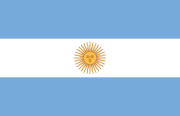 Buenos Aires, Argentina
Buenos Aires, Argentina Caracas, Venezuela
Caracas, Venezuela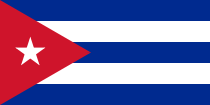 Havana, Cuba
Havana, Cuba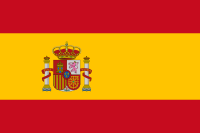 Madrid, Spain
Madrid, Spain Quito, Ecuador
Quito, Ecuador Guayaquil, Ecuador
Guayaquil, Ecuador Mexico City, Mexico
Mexico City, Mexico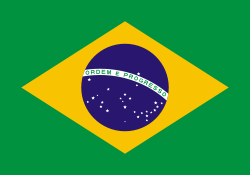 Brasilia, Brazil
Brasilia, Brazil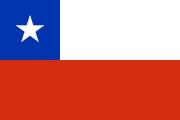 Santiago de Chile, Chile
Santiago de Chile, Chile Seoul, South Korea
Seoul, South Korea Milan, Italy
Milan, Italy London, England
London, England Torino, Italy
Torino, Italy Los Angeles, United States
Los Angeles, United States Santo Domingo, Dominican Republic
Santo Domingo, Dominican Republic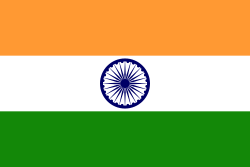 New Mumbai, India
New Mumbai, India
References
- ↑ DANE, Censo General 2005 Resultados Area Metropolitana de Bogotá
- ↑ German explorer Alexander von Humboldt was the first European to call Bogotá "The Athens of South America" during his visit to the city in 1802
- ↑ Arias, S.; Meléndez, M. (2002). "Sacred and Imperial Topographies in Juan de Castellanos's Elegías de varones ilustres de Indias". Mapping Colonial Spanish America: Places and Commonplaces of Identity, Culture and Experience. Bucknell University Press. ISBN 0838755097.
- ↑ [1]
- ↑ web url=http://www.ucl.ac.uk/dpu/events/recent/DPU_Events-Ortiz-Bogota.pdf |title=Changing Social Behaviour: Public Policies in Bogotá, Colombia, 1995-2003 |accessdate=2008-04-12 |format=PDF |pages=p. 17 |publisher=Mayor’s Office – Bogotá
- ↑ "Homicidios" (PDF) (in Spanish) p. 36. Instituto Nacional de Medicina Legal y Ciencias Forenses. Retrieved on 2008-11-08.
- ↑ "Table 6 - Crime in the United States 2007". Federal Bureau of Investigation. Retrieved on 2008-11-08.
- ↑ travel nytimes
- ↑ Profiling Bogotá's Security Plan, Comunidad Segura.
- ↑ Bogotá Transportation Terminal & Train Station Bogotá-dc.com
- ↑ http://www.drclas.harvard.edu/revista/articles/view/242
- ↑ "Ranking-Instituciones-Investigacion-Colombia" (in Spanish). universia.net. Retrieved on 2008-01-13.
Gallery
See also
- Bogotá's Carnival
- Bogotá's Bike Paths Network
- Bolivar Square
- Children's Museum of Bogotá
- Rock al parque
External links
- Bogotá travel guide from Wikitravel
- City Official Site
- Bogotá Tourism - Directory & travel information
- Harvard Gazette Archives Text on Antanas Mockus's many inspired strategies to change Bogotá
- Plaza Capital - Digital magazine about Bogotá.
|
|||||
|
|||||
|
||||||||||

